| HFG1 HFG1 was discovered in the Milky Way Emission Line Study in 1982 by Heckathorn, Fesen and Gull (A&A, 114, 414, 1982). Its mag. 14.5 central star V664 Cas is a close, precataclysmic binary. A publication suggests that V664 leaves a trail of old shocked material as it ejected matter and moves through the interstellar medium (ISM): "a tail of emission at least 20' long, at a position angle of 316deg". It is suggested that this is an ~10.000 y. old trail of shocked material, left behind V664 Cas. This trail is visible on the images below. HFG1 itself has an interesting structure. It has a narrow rim approx. 14.5' in diameter surrounding a 9' diameter central region with an intervening gap. The rim is brightest in the south, suggesting that it interacted with the ISM. The rim is not complete, invisible at northeast. The core has three bright lobes toward the south and a central opening barely emitting in Ha and NII. As shown in POSS II plates, blue (from OIII) shows more strongly than red (Ha+NII), but still, both are described as faint. There appears to be a gradation from stronger OIII in the southern lobes of the core to stronger Ha toward the north. Abell 6 is a more classical "bubble" style nebula. Its emission is stronger in OIII than Ha and overall remains rather faint. Nevertheless its structure is not so uniform. One can note two thin lobes at west and east sides, and some irregularity of the brightness over its surface. |
HFG1 ( = PK 136+05 HFG1 tient son nom de ses trois découvreurs: Heckathorn, Fesen and Gull. Son étoile centrale V664 Cas, de mag. 14.5 est une binaire serrée precataclysmique. Une publication suggère que HFG1 laisse derrière elle une queue de gas émettant dans les logueurs d'onde Ha et NII. Cette queue de 20' au moins s'étend vers le nord ouest et serait agée de 10000 ans environ. Elle a pu être décelée dans l'image ci dessous. HFG1 elle même présente une structure intéressante, avec un arc de cercle à l'opposé de la queue, c'est à dire dans la direction de déplacement de la nébuleuse, ce qui laisse penser qu'il s'agit d'un front d'onde de choc de matière interagissant avec le millieu interstellaire. On note également trois lobes plus brillant dans la raie OIII et une zone centrale plus faible ou le signal Ha domine. Abell 6 est un classique exemple de bulle de ce catalogue (type 2b), mais reste assez faible également (mag=15.0), avec une émission OIII plus forte qu'en Ha. Néanmoins sa structure présente des irrégularité avec en particuliers deux fins lobes aux bords est et ouest. Ses dimensions sont de 188x174" |
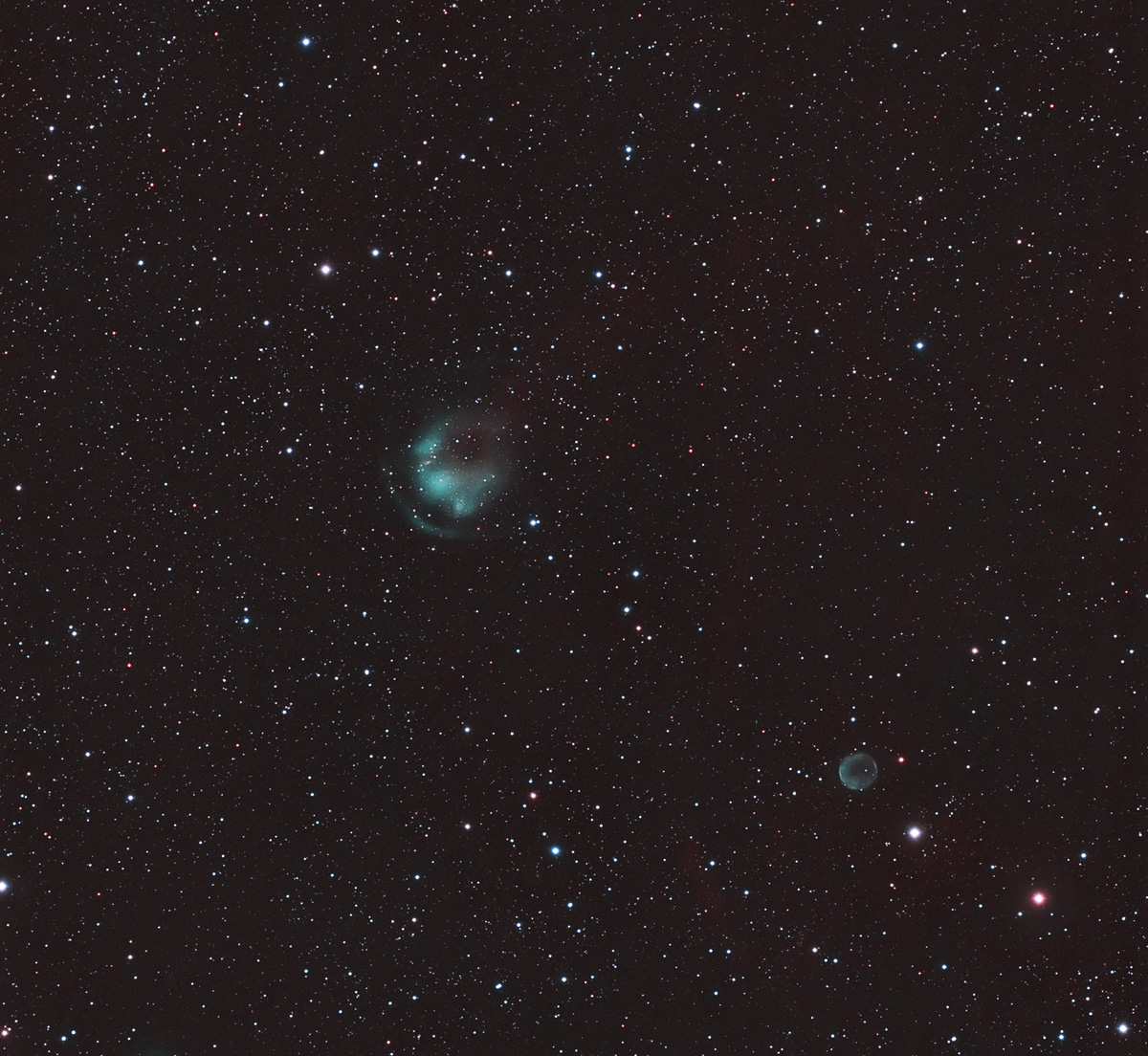 Composite "HOO" color image R=H-alpha (5h40) G=OIII (4h40) B=OIII Takahashi FSQ106ED refractor CCD camera Atik 4000 (Kodak KAI-4021M) @-20°C Astrodon Ha 3nm and OIII 5nm bandwidth filters |
|
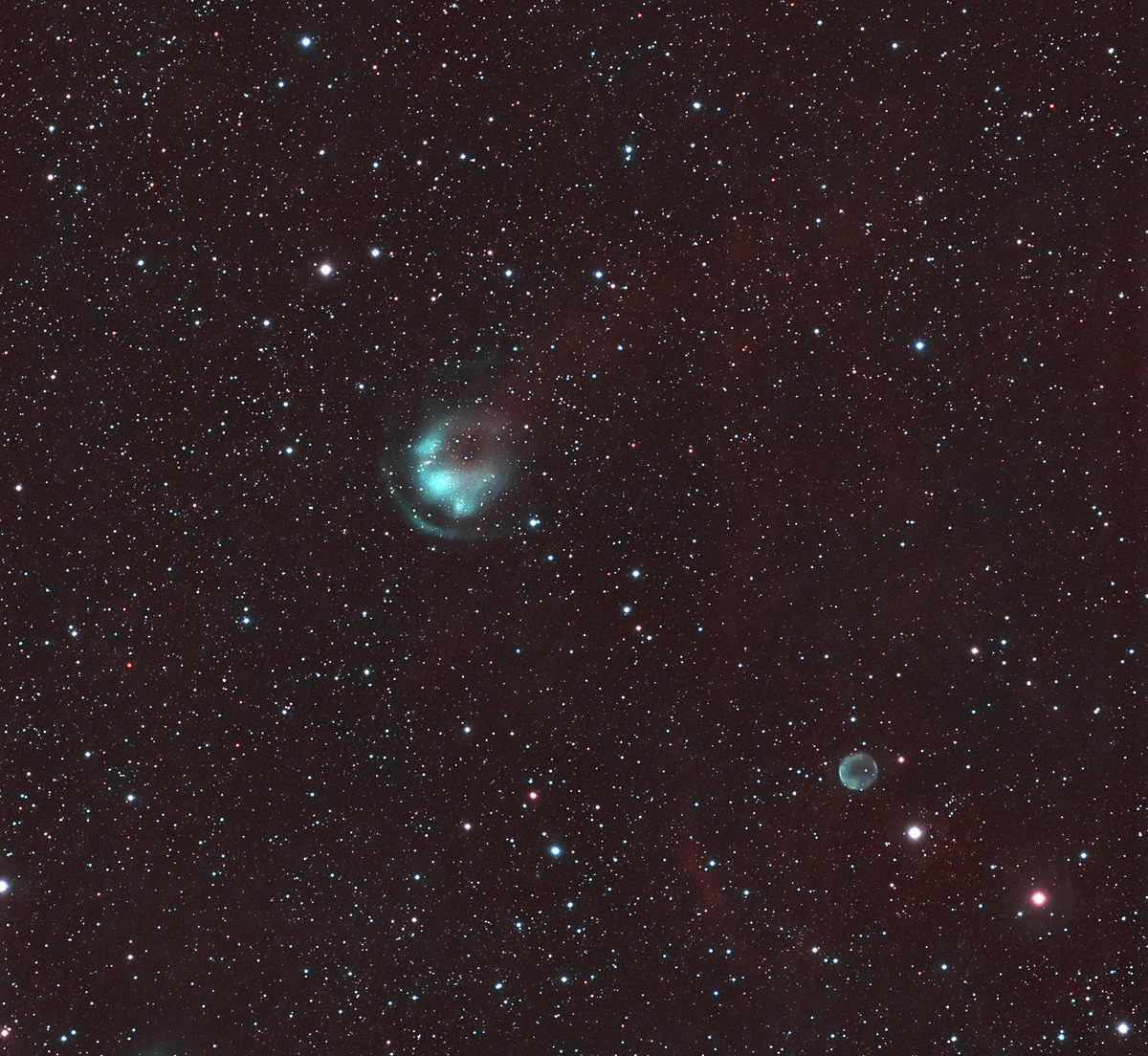 Higher contrast version. 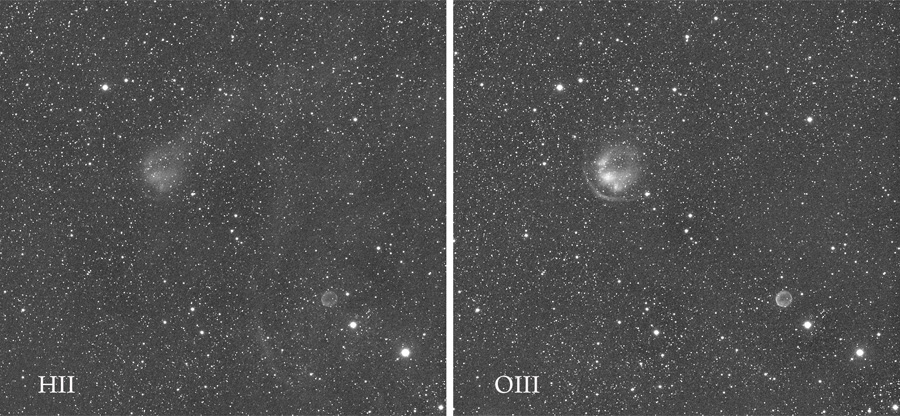
Relative response for the two considered emission lines.
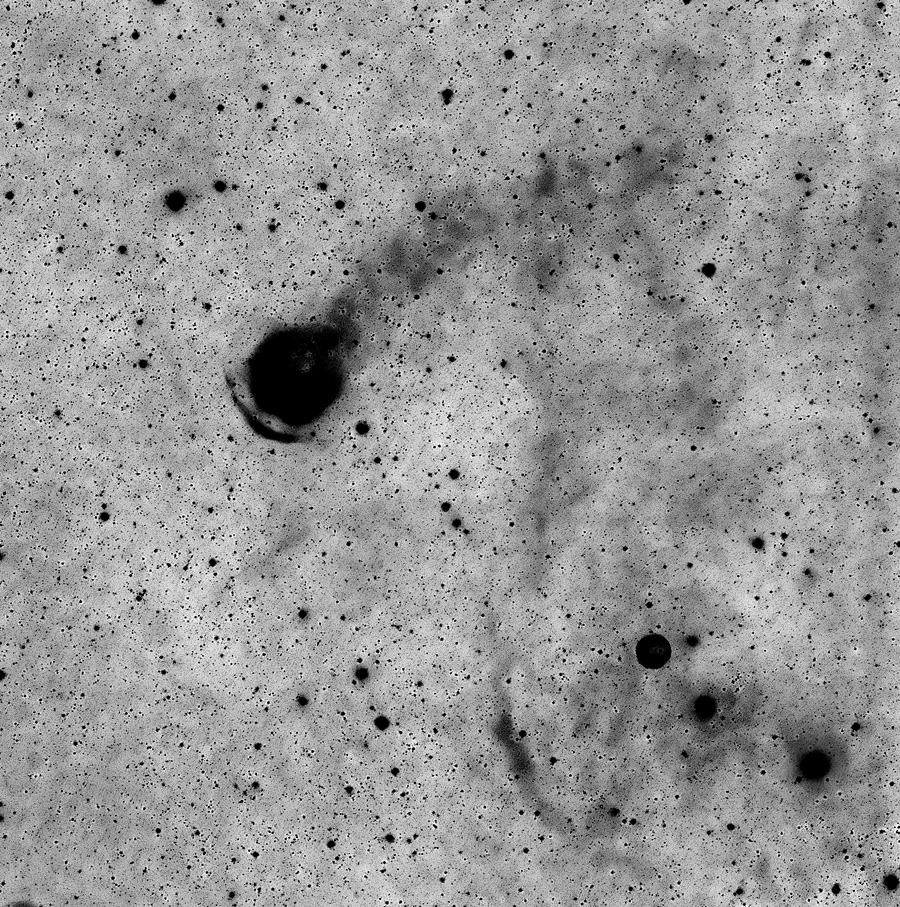 Inverted image, showing the Ha trail behind HFG1 |
|
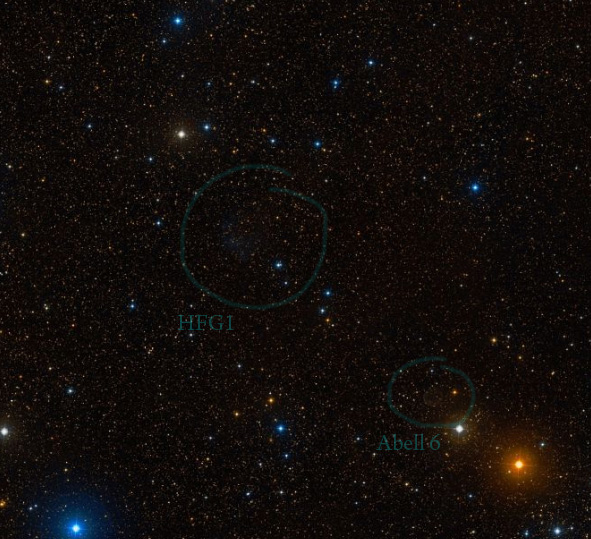 DSS red/blue composite image |
Other images: http://dg-imaging.astrodon.com/gallery/display.cfm?imgID=245 Original discovery paper: http://articles.adsabs.harvard.edu/full/1982A%26A...114..414H About the trail and the velocity of HFG1: http://arxiv.org/abs/0903.2852 |
 |
|




